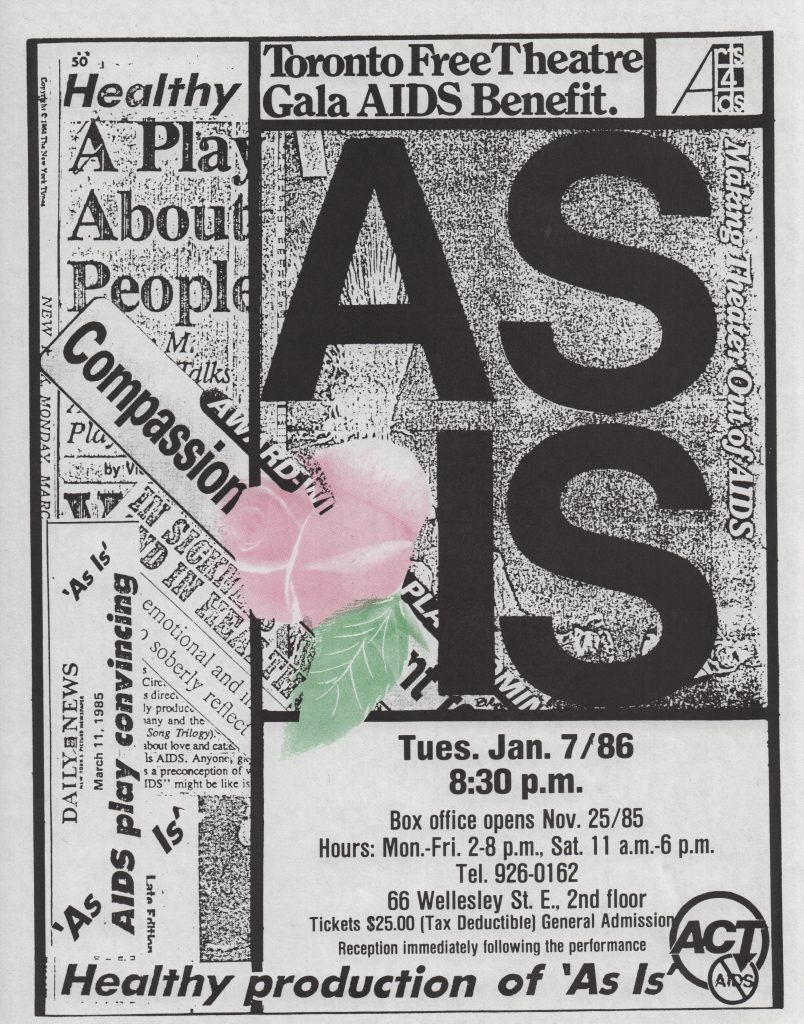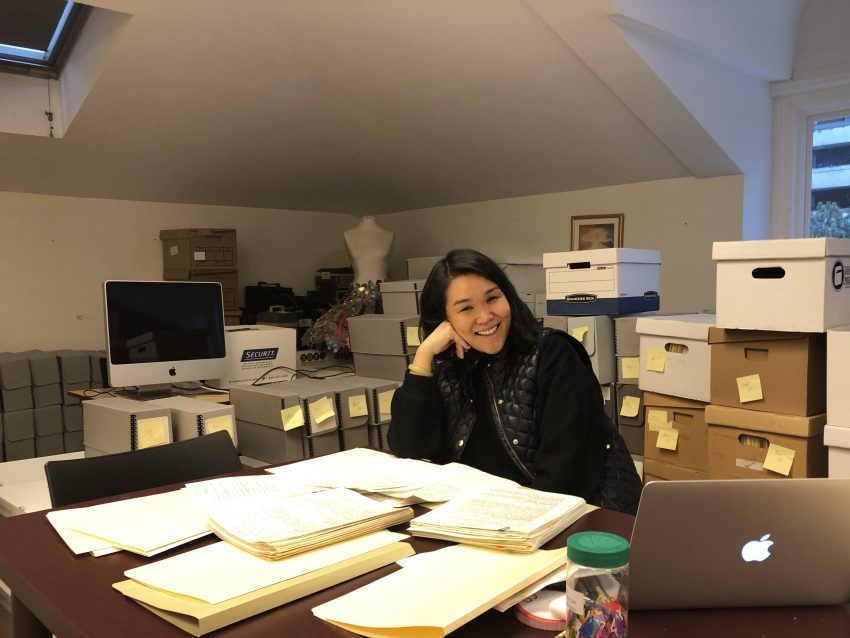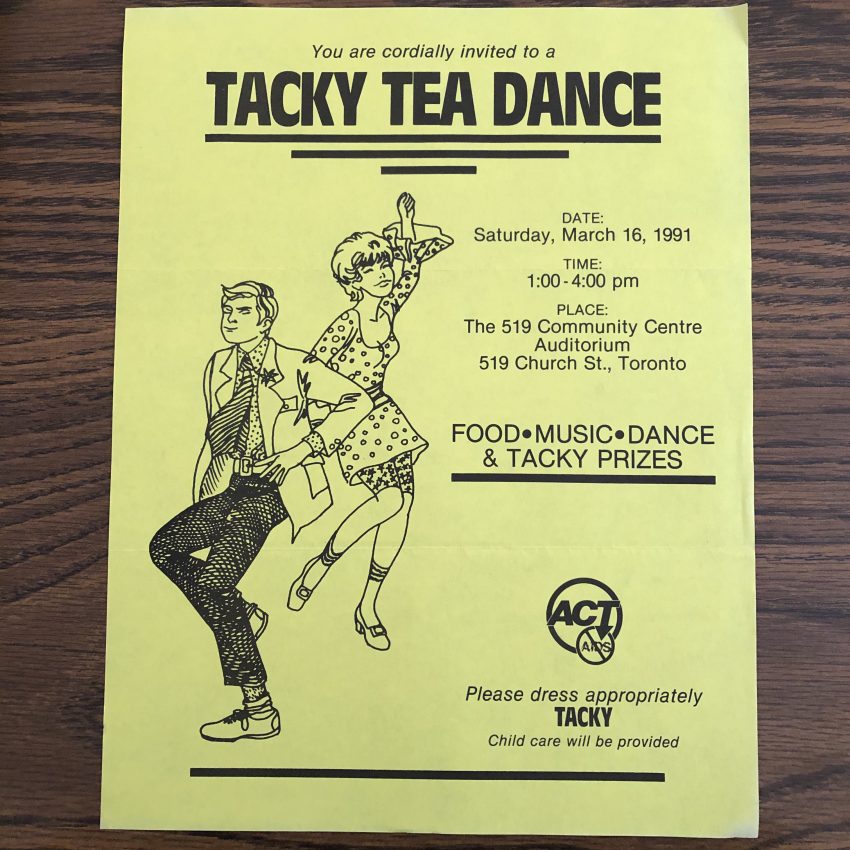
Canada’s last pandemic wasn’t 1918. It started in 1982. The fear, confusion, empathy, and compassion we are all feeling and seeing demonstrated across Canada reminds many LGBTQ2+ people of the early days of Canada’s last experience of a global pandemic (in which homophobia was a predominant element). Much like what is being asked of us today, HIV and AIDS affected an unsuspecting population and transmitted through social activities that had been considered safe up to that moment. As the mysterious and deadly disease moved through our community, confusion, speculation, and disinformation compounded the fear and anxiety our people already felt. Then as now, we called on heroes to put themselves at greater and unknown risks to care for the victims and protect those that remained healthy. Then as now, entire social norms were called into question and changed. Then as now, many of the worst affected died without the physical presence of those they loved.
Last month, The ArQuives finished processing the AIDS Committee of Toronto (ACT) Collection and has made its finding aid freely available through its online database. To highlight this milestone, we have interviewed Ariana Ho, the archivist responsible for processing the collection. Ariana discusses the challenges and joys of processing this collection, objects from the collection, related collections, and the unique lessons this collection provides during the COVID-19 pandemic.

Can you briefly describe the ACT Collection, and why it’s important?
The ACT Collection documents the impact that the AIDS Committee of Toronto (ACT) has had over the last 35+ years. The records in the collection reflect the education, counselling and support programs and services that ACT offered to those who were at risk, affected by, or living with HIV and AIDS. This collection also documents how ACT has grown and evolved throughout the course of the AIDS crisis. The organization was established in 1983 by a group of community members and activists who saw the need for a standing AIDS service organization during a time of government inaction, discrimination, misinformation and hysteria. In its early days, ACT was heavily reliant on its volunteers, and secured a government grant that allowed it to hire on a small staff for a period of 6 months. Today ACT is Canada’s largest AIDS service organization. With increased awareness of HIV and AIDS, increased life expectancy, better funding, the introduction of antiretrovirals, ACT’s programs and services have adapted to meet the changing community needs over time.
The ACT Collection is one of the largest collections in the care of The ArQuives. From 1984 to 2015, The ArQuives received over 35 donations of ACT records from the organization’s staff and volunteers.
Tell me a little bit about processing and describing this collection. What did it entail?
People aren’t always aware of the amount of labour and resources that are involved in making collections available to researchers. Once a donation arrives at The ArQuives, the material isn’t immediately made available to the public. There are multiple steps that need to be taken before a collection is processed and available for researchers through our database. We receive multiple donations a week, and it can take a long time before a staff member or volunteer has a chance to work on it. In addition, long-term storage of materials and archival supplies for processing and preservation cost a lot of money. I was able to process this collection thanks to funding made available through the Library and Archives Canada Documentary Heritage Communities Program.
It took around 8 months of full-time work to process and describe the ACT Collection. It involved a number of steps:
- Becoming familiar with ACT’s history and activities through research outside of the collection.
- Combing through the records across separate donations to figure out what each donation contained.
- Painstakingly process materials to archival-quality standards for long-term preservation. This meant removing items like paperclips and staples that will deteriorate materials, and I placed items in acid-free folders and boxes.
- Organize the materials to reflect the context in which they were generated, including projects, activities, administrative structure, or media type.
- Wrote a detailed finding aid to serve as a guide to the collection, providing information on the collection’s contents and the context in which the records were created.
- Published the finding aid in The ArQuives’ online database, enabling the public to freely search the collection.
What was the biggest challenge in processing this collection?
The ACT Collection comprises materials donated from dozens of people involved in the organization over 30 years. Because of the volume and variety of material, it was challenging to understand records in specific contexts, and how they related to each other.

Was there a particular object(s) from the collection that personally affected you?
In its earlier days, ACT received a lot of correspondence from members of the public and organizations across the country asking for any information ACT had on HIV and AIDS. It was pretty heart wrenching to go through correspondence as people were desperate for accurate, up-to-date information during a time when resources were not readily available, and misinformation was common.
How does this collection complement other collections at The ArQuives?
There are a number of organizational and personal collections housed at The ArQuives that complement the ACT collection. We have the personal papers of a number of early and lifelong AIDS activists including Michael Lynch, Joan Anderson, Ron Rosenes, Bernard Courte, Bill Lewis, among many other community members. We also have the records of organizations such as AIDS Action Now! and the Alliance for South Asian AIDS Prevention. AIDS Action Now! was established in the late 1980s, to challenge government and medical inaction on HIV and AIDS and to advocate for those who are living with HIV and AIDS. ASAAP has provided multilingual HIV and AIDS services to the South Asian community of Toronto for over 25 years, and was established by Khush, with the support of ACT.

What objects from the collection do you think members of our community would be especially excited to see?
The ACT collection contains a sizable number of photographs. There are around 9000 photographs from various events and fundraisers, including the AIDS Walks, Fashion Cares galas, etc. Folks may also be interested in seeing posters and brochures that were produced by ACT’s various HIV and AIDS prevention campaigns, which have been reprinted and reproduced by other organizations across the country.
Are there any lessons from the ACT collection that are relevant during the current COVID-19 pandemic?
I think that the government’s inaction in response to the AIDS crisis highlights the importance of community organizing. Organizations like ACT were able to make an impact because of their dedicated staff and volunteers. Although the Canadian government has passed legislation to help folks deal with the impact of COVID-19, the virus and its effects are disproportionately impacting those who are most vulnerable. Once the pandemic is over, the deep inequities will continue to exist, and I believe that it’s important to advocate for the most vulnerable members of our community.
How can historians and members of the community access this collection?
For those who are interested in the collection, archival descriptions of the ACT collection can be found on The ArQuives’ online AndorNot database. Researchers can use the database to search, select and request the records that they are interested in seeing. We do ask that researchers request material before their visit to The ArQuives, since most of the archival records are stored offsite and can take a few days to retrieve.
Please consider helping to support us as we process our collections. You can donate here or by visiting Canada Helps.

